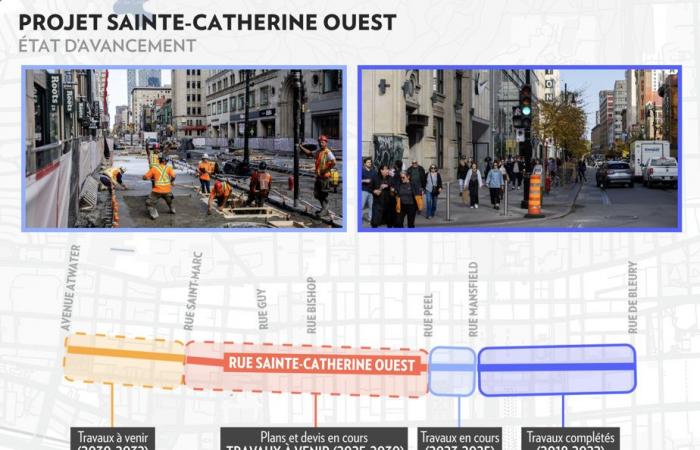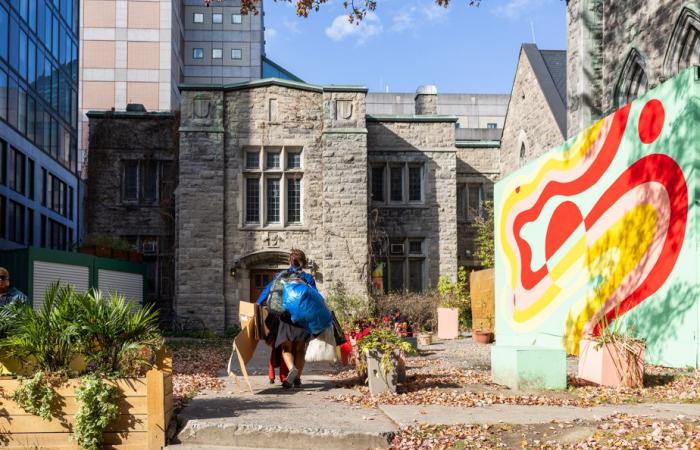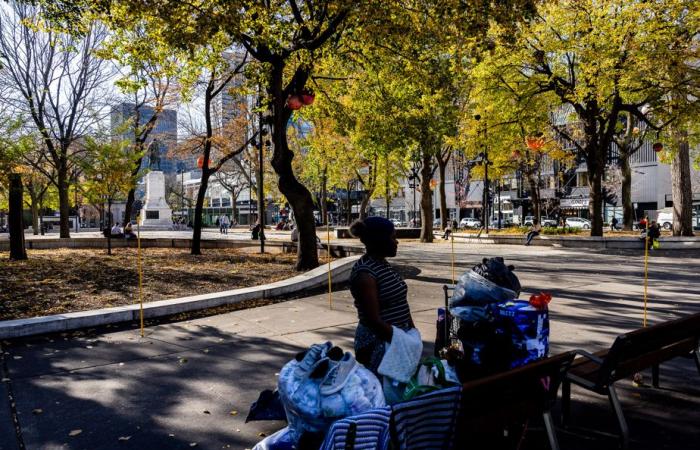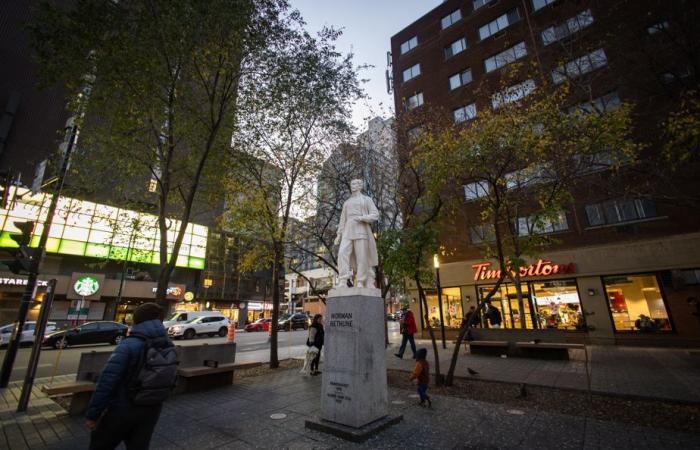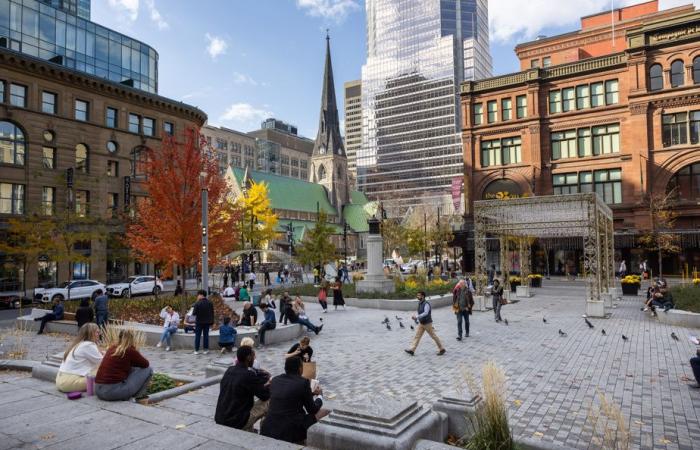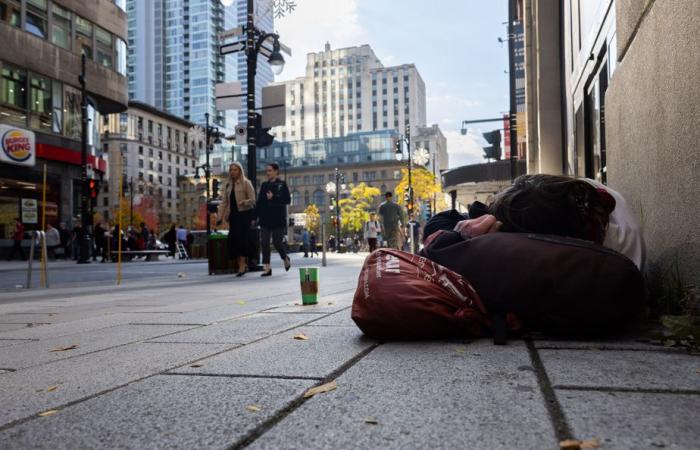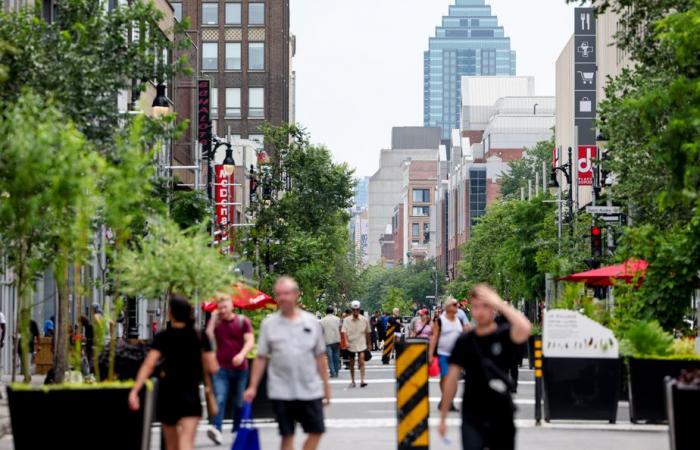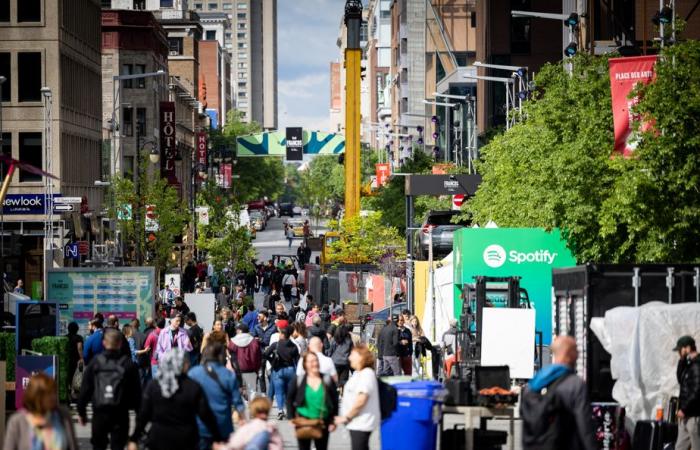Two visions of urban development will soon collide with a bang in downtown Montreal.
Posted at 1:23 a.m.
Updated at 5:00 a.m.
Rue Sainte-Catherine Ouest will be under construction until at least 2032. Renovation of underground infrastructure, widening of sidewalks, greening: this work will change the face of the legendary commercial artery.
The first phase of the project, carried out between 2018 and 2022, was crowned with success. Everyone seemed to be on the same page for the future.
At least: so far.
A new element is now being studied very seriously by the Plante administration, I learned. She wants to completely and permanently pedestrianize four important sections of Sainte-Catherine West.
INFOGRAPHICS THE PRESS
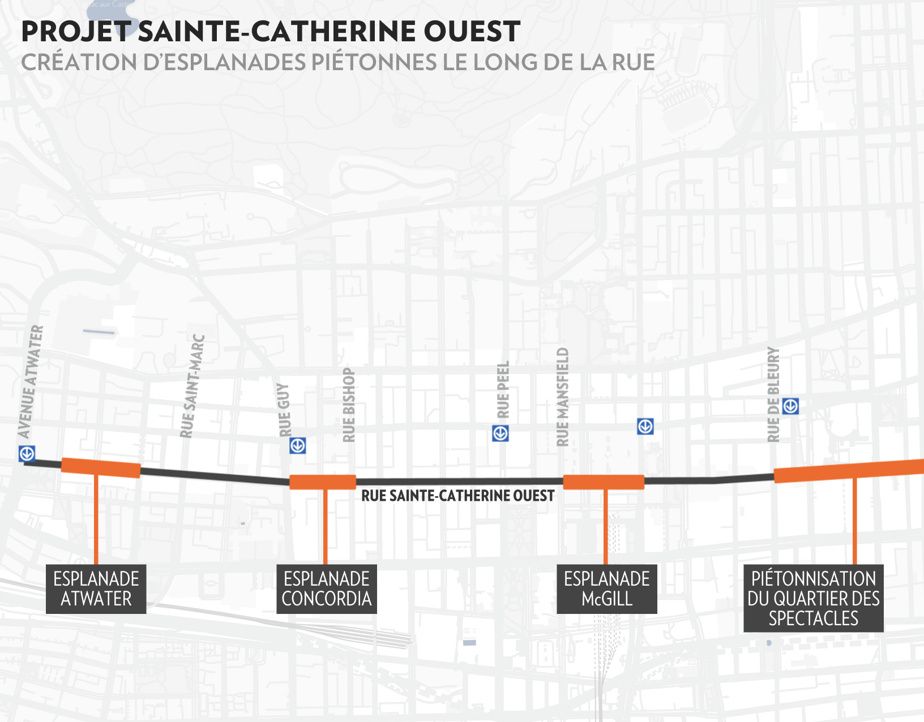
INFOGRAPHICS THE PRESS
Its goal: to create vast “esplanades” on the roadway, with the appearance of public squares. These developments would involve redirecting all deliveries and garbage collection to side streets.
The project would at the same time serve to “eliminate through traffic along the entire length of the street”.
I obtained a confidential document, prepared in the spring of 2024 by the City’s Urban Planning and Mobility Department, which presents synthetic images of these “esplanades”. We see smiling children sitting on the public road, clowns making sculptures with balloons, people in wheelchairs in the middle of the street, flowers, butterflies…
Happiness and joy, on paper.
But in real life, the proposed change raises serious concerns among many business people and architects.
Let me make it clear right away: we are not here in the old “pedestrians versus motorists” debate. Everyone agrees on the need to rebalance everyone’s place.
It is rather in the execution, and in the issues of cohabitation to be expected, that it sticks firmly.
The most virulent criticism comes from a renowned institution: downtown Montreal. This non-profit organization, which represents approximately 5,000 businesses, is intimately familiar with the reality of the neighborhood.
Glenn Castanheira, its general director, is sharp: this pedestrianization project is based on “theoretical understandings of the city center”. It does not at all correspond to the result of consultations carried out on the ground for years.

PHOTO MARTIN TREMBLAY, LA PRESSE ARCHIVES
Glenn Castanheira, general director of the Montreal center-ville organization
“It does not meet any of the winning conditions necessary for the success of a pedestrian development,” he says. And we still do not understand the added value that is sought here, while the current development of rue Sainte-Catherine Ouest is a great success, which there is consensus. »
Mr. Castanheira refers to the already renovated section, between De Bleury and Mansfield streets.
The width of the sidewalks has almost doubled, to the great delight of pedestrians. Trees and street furniture have been added in abundance. A single lane of traffic has been retained, with enough space on each side to accommodate deliveries and turns at intersections. The street is occasionally pedestrianized, but at the same time it retains “flexibility”.
“One of the winning conditions is the modularity of the space,” believes Glenn Castanheira.
Another concern with this project, and it is major, concerns safety and cleanliness.
There are fears that these plazas will turn into gathering places for drug addicts, homeless people and other drug dealers. This would not be unprecedented, if we rely on what has happened with several parks and squares created in recent years in the city center.

PHOTO MARTIN TREMBLAY, THE PRESS
The Monastery garden, rue Sainte-Catherine
-
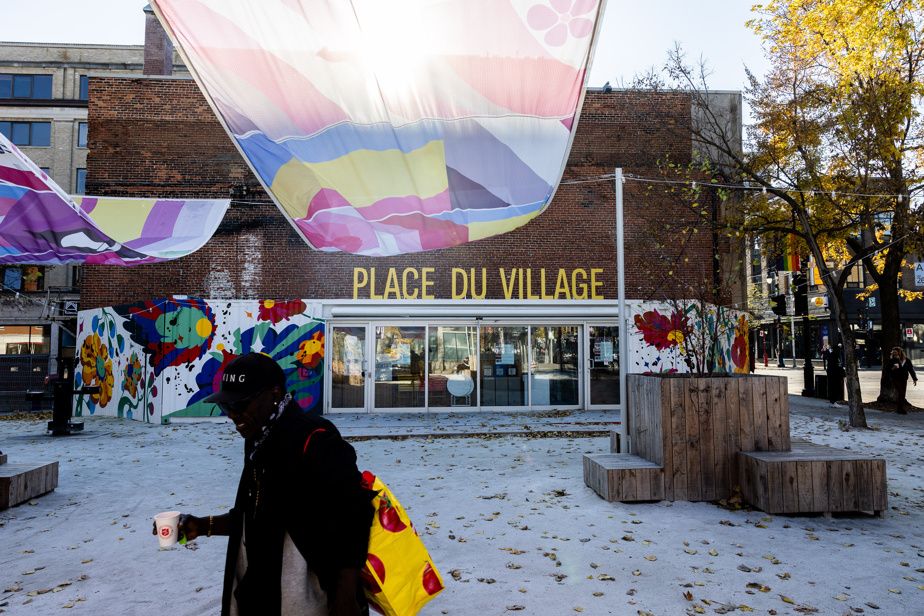
PHOTO MARTIN TREMBLAY, THE PRESS
The Village Square, at the corner of Sainte-Catherine Est and Wolfe streets
-
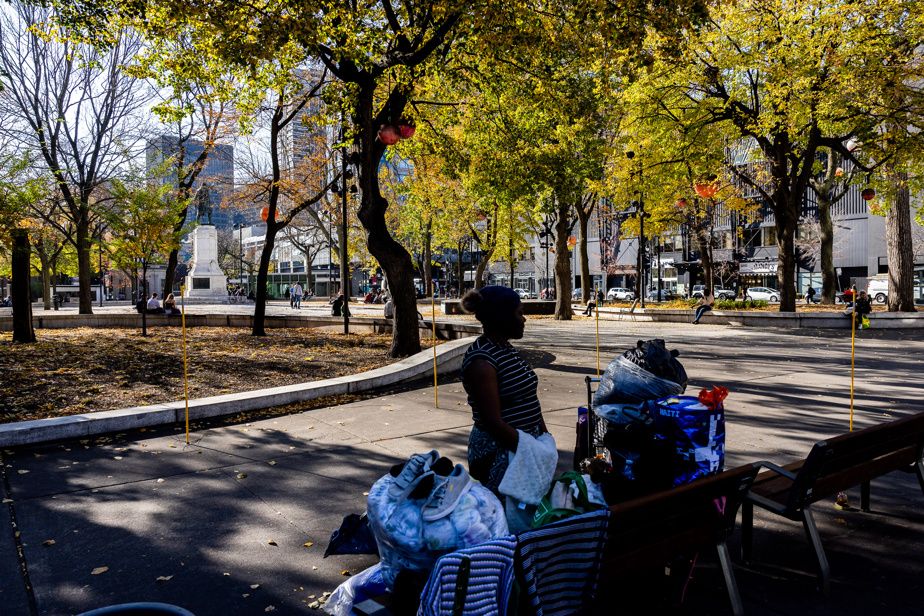
PHOTO MARTIN TREMBLAY, THE PRESS
Cabot Square, at the intersection of Atwater Avenue and Sainte-Catherine Street West
-
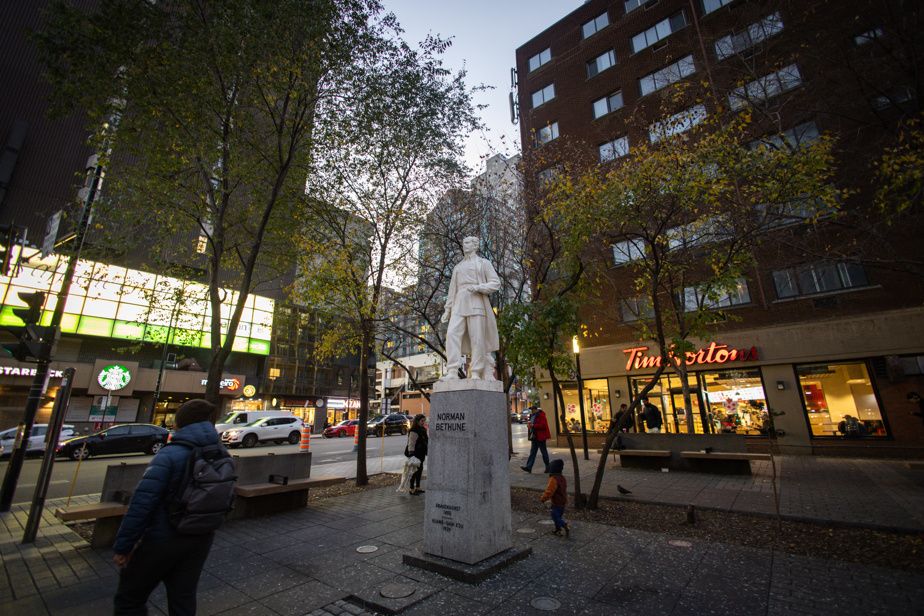
PHOTO SARAH MONGEAU-BIRKETT, THE PRESS
Place Norman-Bethune, at the corner of rue Guy and boulevard De Maisonneuve
1/3
Cabot Square and Place Norman-Bethune, in the West, or even Place du Village, further east, were taken over by loiterers and petty criminals of all kinds, despite the millions invested in them. embellish.
Glenn Castanheira describes some of these spaces as “no man’s lands”.
“Cabot Square is a magnificent public square that was created in one of the most inhabited corners of downtown, corner Atwater and Sainte-Catherine, and it is not used by virtually any residents of the area because the The city lacks the resources to ensure its operation and maintenance,” he laments.
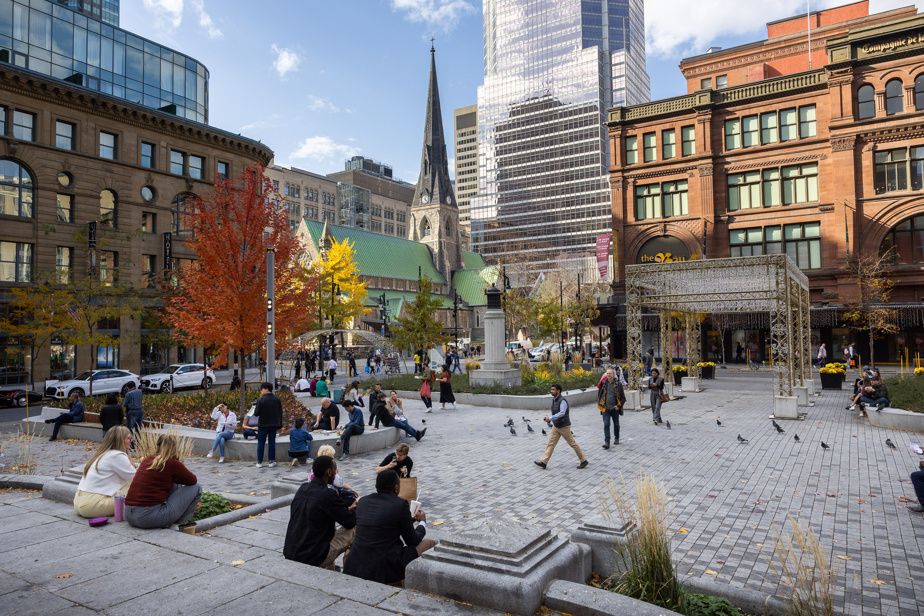
PHOTO MARTIN TREMBLAY, THE PRESS
Phillips Square, at the corner of Sainte-Catherine Street West and Union Avenue
The esplanades planned for Sainte-Catherine Street, which resemble urban parks with their furniture for sitting and lounging, could suffer a similar fate, he fears. Others share this concern.
I repeat: this is not a question of putting pedestrian streets on trial. There have been great successes in summer pedestrianization in recent years in Montreal. For example: avenue du Mont-Royal, in the Plateau, or rue De Castelnau, in Villeray.
Some would like them to be closed to traffic all year round. A healthy debate is currently taking place on this subject.
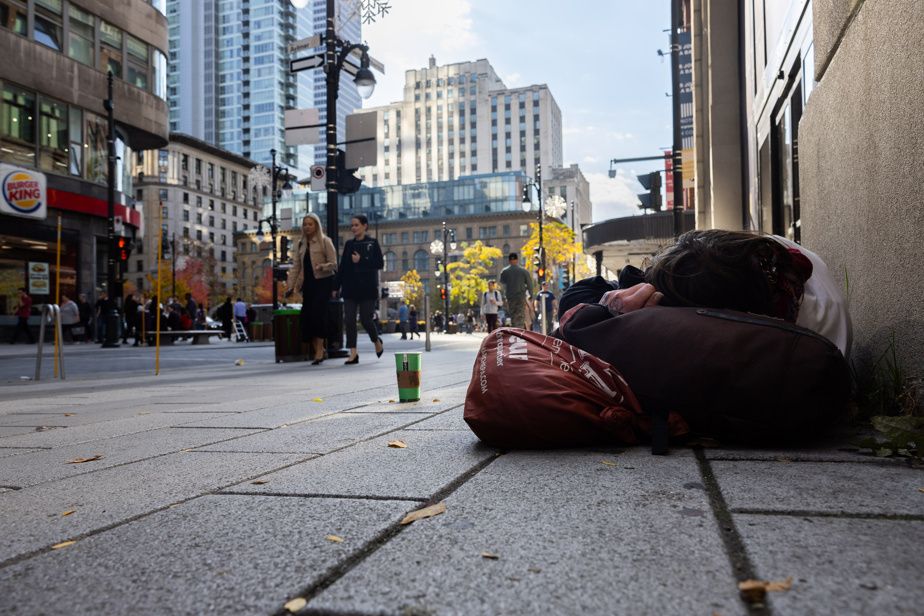
PHOTO MARTIN TREMBLAY, THE PRESS
The city center is grappling with a series of gigantic social issues.
But downtown, grappling with a series of mammoth social issues, is in a different category.
In the Village, for example, the difference in the feeling of security is major, between the times when rue Sainte-Catherine Est is pedestrianized and those when it is not, notes the Police Department of the City of Montreal ( SPVM).
The fact of having a certain amount of traffic, with delivery cars, taxis, police vehicles, means that “people are less inclined to want to settle down, then to become stuck in a place,” Guillaume tells me. Théberge, commander of neighborhood post 22.
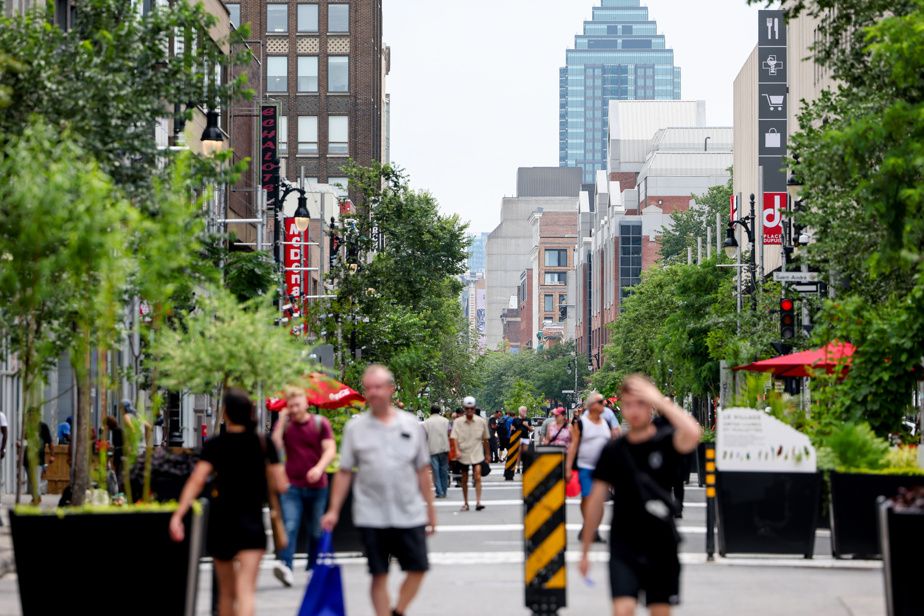
PHOTO FRANÇOIS ROY, LA PRESSE ARCHIVES
In the Village, the difference in the feeling of security is major, between the times when Rue Sainte-Catherine Est is pedestrianized and those when it is not, notes the Police Department of the City of Montreal.
Last spring, the SPVM suggested that the City of Montreal reopen the street to traffic during quieter periods of the summer, for example from 11 p.m. to 11 a.m. The idea was to prevent crowds and nighttime loitering, which make citizens feel unsafe.
The request was dismissed.
What would be the ingredients so that the planned esplanades on Rue Sainte-Catherine Ouest do not transform into vast areas of loitering and insecurity?
One of the keys to success could lie in the almost permanent animation of the place. A section of Sainte-Catherine Street West, located in the Quartier des spectacles and closed to traffic for a good part of the year, is a shining example.

PHOTO DOMINICK GRAVEL, ARCHIVES LA PRESSE
Rue Sainte-Catherine closed to automobile traffic, in the Quartier des spectacles
First of all, it is the mecca of all the major summer festivals. It already takes up several months of full-time work. The rest of the year, the Quartier des Spectacles Partnership invests a fortune to liven up and secure the premises, with a series of small and large events.
Neighboring businesses and the City of Montreal share the bill. However, municipal funding of several hundred thousand dollars has not yet been confirmed for the coming years, the general director of the Partnership, Éric Lefebvre, told me.
In other words, even THE jewel of Montreal’s public squares is struggling to make ends meet.
What type of entertainment could be offered on the future esplanades planned by the City? Who would pay the bill, when Montreal’s finances are in a precarious state? These crucial questions deserve to be asked.
I tried to speak to a manager from the Town Planning and Mobility Department. I would have liked to know, for example, if the street will indeed remain “accessible for all mobility”, as indicated in the document I obtained. My requests were in vain. Rather, it was a press officer from Mayor Plante’s office who called me.
She tells me that the esplanades scenario is “considered”, but that nothing has yet been “finalized”. However, the document indicates that the plans and specifications are “in progress” for a good portion of the street.
Mystery. Suspense.
Glenn Castanheira, from downtown Montreal, has his theory on the genesis of the idea.
The City’s proposal seems to come from a project that is closer to an ideology, rather than a pragmatic desire to contribute to collective quality and economic vitality.
Glenn Castanheira, general manager of Montreal downtown
He was never able to find out where this addition of pedestrian plazas came from. “Every time I ask the question, the answer is lame. »
Montrealers have the right to have precise information without delay on the redevelopment of Sainte-Catherine West. A project, I remind you, which has been the subject of several public consultations and for which a borrowing regulation of $93.6 million has just been adopted by the municipal council.


